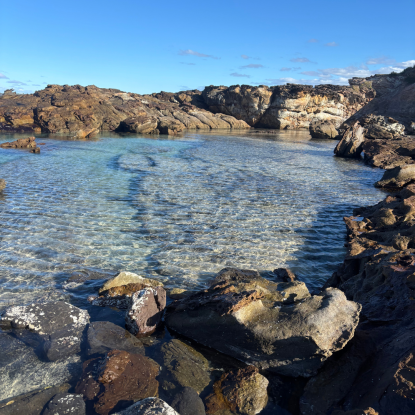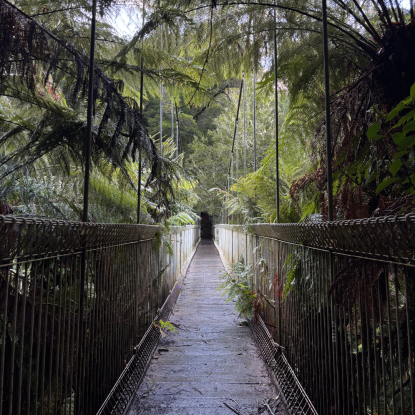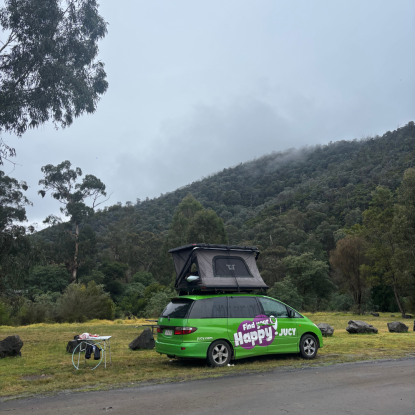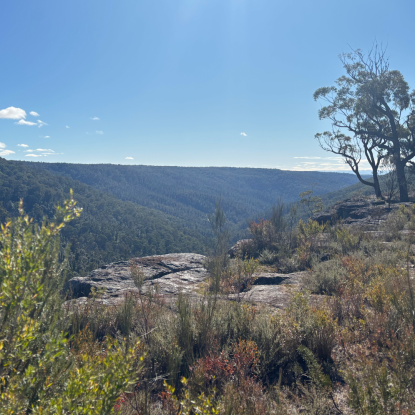What I Learned on a 17-Day Road Trip Across Australia
Over the last 17 days, my roommate and I slept in a decked-out minivan and travelled across South-Eastern Australia. We drove, hiked, and sight saw our way through Queensland, New South Wales, Victoria, Jervis Bay Territory, Australian Capital Territory, and South Australia, ending our trip in the Adelaide Airport. From getting stranded in the rainforest with a dead car battery to climbing and swimming in mermaid pools, this trip was nothing short of eventful. Here are a few lessons and tips I learned as a first-time traveller and someone who hadn’t been outside the US before studying abroad.
A slight plan is still a plan
Before this trip, neither my roommate nor myself had planned any kind of foreign travel. 17 days is a lot of time, and a logistical nightmare to try and raw-dog with no plan. The easiest method I found was to create a slideshow with the following categories: packing, destinations, campsites, and budget. Making a guide organized the trip and made it simple to plan, step by step. We went down the Eastern coastline on Google Maps and found several destinations, cities, and national parks we wanted to visit, jotting them down on the slideshow. Australia has a huge network of free campsites that are easily accessible, so we planned to stay at as many of these sites as possible. At the least, we determined our route and where to sleep every night. At the most, we had specific attractions we wanted to see. Having an even slight guideline helped save us the hassle and wasted time of figuring out where to go and what to do as we travelled.
Stick to the budget
As aforementioned, 17 days is a lot of time… and a lot of money. In order to save as much money as possible, we made a few changes to our plans and utilized as many free resources as we could find. For one, we rented a converted minivan with a bed, portable stove, electric cooler, and other amenities from a brand called Jucy. With a discount code, the van was around $35AUD a day, which is cheaper than most rental cars. We saved hundreds as we didn’t need to buy hotels or stay at hostels, pay for transport, or buy takeaway the entire time. We only paid for campsites if they had showers, laundry, or similar amenities that we felt were worth the price. Some gas stations have cheap or free showers and even free coffee, so be on the lookout. Sticking to a budget is important in case of an emergency, a free campsite doesn’t work out, or a situation arises that costs money to fix.
Visit the local spots
As we made our way down the coastline and into the countryside, we drove through countless rural towns with populations less than 500. The internet has plenty of “Best Places to Visit” articles, but the internet won’t tell you about the hidden gems in every small town you pass through. Instead of hightailing it to the next destination, we took our time to walk through town centers and stop at a cafe here and there. We made sure to entertain conversations in gas stations, with strangers and in stores. If we saw an “attraction here” sign in the middle of the countryside, we stopped to see it. We found the most stunning hike and waterfall by following a street sign we saw on the side of the road. We also found an abandoned church, a Hello Kitty pop-up restaurant and incredible views during our wandering. As iconic and beautiful as they are, the big cities can feel a bit performative of Australian culture and are tailored to tourists. Visiting the local and “overlooked" areas gave us a more realistic and authentic view of Australia.
Document the trip but not completely through a screen
Doing photoshoots at Bondi Beach, filming vlogs deep in the bush, and journaling about the day we had are some of my favorite parts of the trip. It could have been easy to pull out my phone at every cool place we went, but I wanted to get creative and find more meaningful ways to remember everything. I kept a travel journal and filled it out during the countless hours spent driving down the coast. I wrote down and described all of the campsites, towns, stores, then summarized the day’s activities on the next page. My roommate brought a blank photobook and put small leaves, sea shells, and even tree sap in each slot, using a sticky note to document where the item came from. Instead of a million random pictures in my phone, I have a physical means to go back and remember the trip, which feels a lot more special.
Adaptability is Key
If there is one lesson I learned from this trip, it is that being adaptable is the key to enjoying every moment. Each night we slept in either the van or a tent in 20-30° weather. It was so cold that our pillows and blankets had ice on them. Instead of letting it get to us, we added some layers. We made hot tea, put on leg warmers, and did our best to embrace the temperature. The laundry machine was broken at a campsite we were banking on to clean our clothes. We adapted our schedule and found a laundromat in the following days. We drove two hours the wrong way at one point, and had a three hour drive backwards to our destination. We could’ve sulked and been upset about it, but we were grateful that we got to see a new part of Australia, even if it is out the window. Being adaptable makes for a positive mindset and in turn a much more enjoyable experience.
Talk to as many people as possible
Talking to Australians, other travelers, and whoever will continue the conversation is one of the best parts about being in another country or continent. Asking questions and striking up a chat gave me the opportunity to learn about Australia from the source, and get to know a different culture from a personal angle. My roommate and I stumbled into a Korean barbeque restaurant in Melbourne and ended up befriending the owner, singing songs as a group, and getting free drinks – just by being friendly and continuing the conversation. From my perspective, Australians really are as “chill” and laid-back as they say. They always seem open to small-talk and find it so exciting to meet new people from different countries.
Leave the comfort zone at home
As an anxious person, moving to a different country and being completely out of my comfort zone was definitely terrifying, and it was hard at first to try new things, talk to strangers, and not isolate myself. During this trip, there were plenty of experiences that would’ve made me shutter and turn around six months ago. Through my time in Australia, I’ve learned that this does nothing but stunt my personal growth and stop me from having incredibly fulfilling experiences. Of course it was uncomfortable at first, but the more I made decisions and did things that scared me, the more I learned to let go of those fears that held me back. I drove on the other side of the road, I tried new foods, I hiked tall mountains, I spent days in the bush with no cell service. And I’m so glad I did because now I have a newfound confidence and desire to conquer more of my fears.
Even when plans don’t work out, you will always figure it out.
Probably the most important lesson I learned on this trip is that sometimes it’s just not going to work out – and that is okay. There were many, many situations during the trip where things did not go as planned. Earlier I mentioned that the washing machine was broken, so we decided to go to a laundromat in Melbourne. While we did our laundry, the parking meter ran out and the car got towed, derailing our plans and costing us hundreds of dollars. We planned to redeem our time in Melbourne the next day and stayed positive. As we went to leave our campsite in the morning (two hours outside of Melbourne on a mountain), we found that the car battery died overnight, and we had little to no service to call anyone. We ended up waiting two hours for someone to come and fix it. Instead of being upset, we popped the tent back open and relaxed until it got fixed. When something went wrong, we did our best to turn the situation around and find a silver lining. Learning to laugh it off is a skill that is necessary to truly embrace the
experience – and now I have some pretty funny stories to share when I get home.




